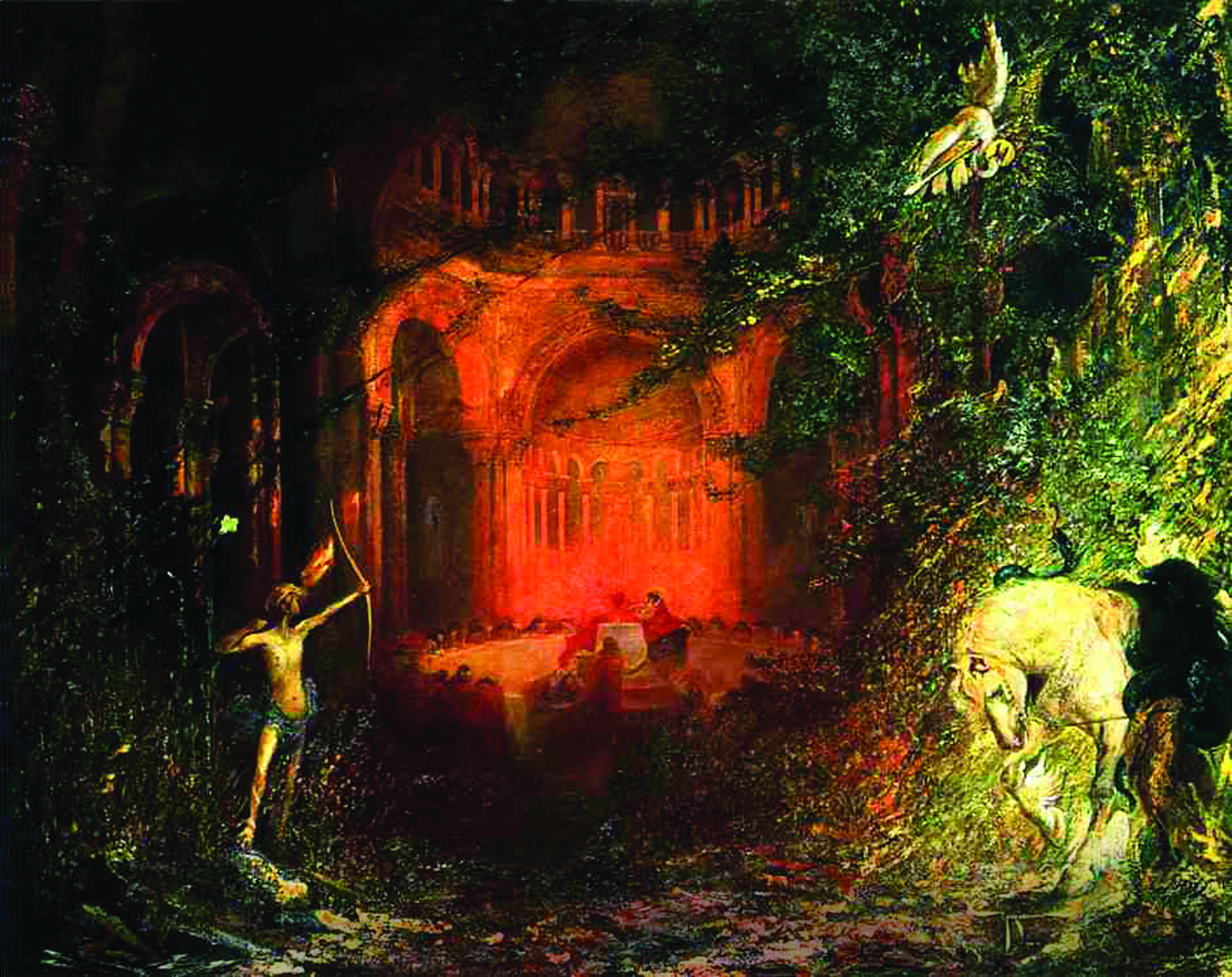A Meditation on Parsifal
 Is Parsifal Christian? Is it Buddhist? Pagan? Mystery tradition? Or is it all of these together? Of course, the answer is all of these—and more—together. But in order to understand this fully it is necessary to understand Wagner’s own ideas about religion, art, and the use of symbolism in communicating these ideas through the medium of music drama. We must go to Wagner himself for the starting point.
Is Parsifal Christian? Is it Buddhist? Pagan? Mystery tradition? Or is it all of these together? Of course, the answer is all of these—and more—together. But in order to understand this fully it is necessary to understand Wagner’s own ideas about religion, art, and the use of symbolism in communicating these ideas through the medium of music drama. We must go to Wagner himself for the starting point.
Wagner called his four-part Ring of the Nibelung a Bühnenfestspiel or “stage festival play,” and Parsifal he called a Bühnenweihfestpiel, or “stage consecration festival play.” Wagner fully intended to have Parsifal serve a religious purpose in his time, just as the Passions of Bach and the tragedies of the ancient Greeks had done in their times. But it is very important to understand what Wagner meant by religion. He was not interested in the doctrinal or dogmatic level of any religion. For Wagner, the artists of his time were the new priests. He believed that the Christianity of his time had failed and that organized, institutional religion was actually obscuring the true meaning of the teachings, rather than illuminating them. Thus, in his mind, it was up to artists to communicate, through artistic and religious symbol, the true nature of the teachings, and in this light Wagner uses symbols from various religions to represent what he sees as the path to redemption and salvation. He freely uses Christian, Buddhist, Hindu, Pagan, and Mystery Religion symbols in Parsifal without in any way trying to “convert” anyone to these outward religious traditions. Here is what he writes in Religion and Art:
One could say that at the point where religion becomes artificial it is for art to preserve the essence of religion by grasping the symbolic value of its mythic symbols, which the former would have us believe in their literal sense, so that the deep, hidden truth in them might be revealed by their ideal representation.
Wagner scholar Barry Millington, in translating the above, says of this passage:
The value of religion, therefore, was to be found not in a fundamental acceptance of its tenets, but in a presentation in symbolic form of its universal truths.
This is what Wagner is doing in Parsifal. Through the use of religious and spiritual symbols drawn from a variety of world traditions, he is illuminating the path to enlightenment and salvation as he understands it. He specifically gives Kundry past lives, as we see in both Buddhism and Hinduism. The episode of Parsifal shooting the swan in Act I also reflects both Hinduism and Buddhism. Before the Buddha became a monk, he was known as Prince Siddhartha. One day in the forest he came upon a wounded swan who had been shot with an arrow. He withdrew the arrow and nursed the swan. Soon a group of his relatives appeared, and one of them said, “I claim this swan because I shot it.” Prince Siddhartha said, “I claim this swan because I saved its life.”
In Hinduism, the white swan (the sacred hansa) is a symbol of the mount of Brahma the Creator, symbolizing the spiritual ability to distinguish what is real from what is unreal. This ability is of crucial importance in Act II when Parsifal must resist the temptation of Kundry.
Wagner also uses the Eucharist as the central ceremony of the Grail knights; Parsifal swings the spear in the sign of the cross; and at the end of the drama a dove hovers over Parsifal as he performs the Grail ceremony. Some people have said that therefore Parsifal should be seen as only Christian. But the Eucharist is not of Christian origin. Indeed, the Eucharist was a central ceremony in the Mystery Religions of Mithra, Osiris, and Dionysus going back thousands of years before Christ. The spear and cup, originally fertility symbols in the old religions, became the spear that pierced Christ’s side and the cup that caught his blood as it flowed from the cross. Wagner uses all of these symbols, and others, in his own way, fashioning a story that leads us away from outward religious doctrine and dogma and into the deep recesses of union with the divine. As the prophecy appeared to Amfortas in letters of fire, “Der reine Tor, durch Mitleid wissend,” the innocent fool enlightened through compassion.
Former Zen Buddhist monk Paul Schofield is a writer, musician, and the author of The Redeemer Reborn: Parsifal as the Fifth Opera of Wagner’s Ring.

